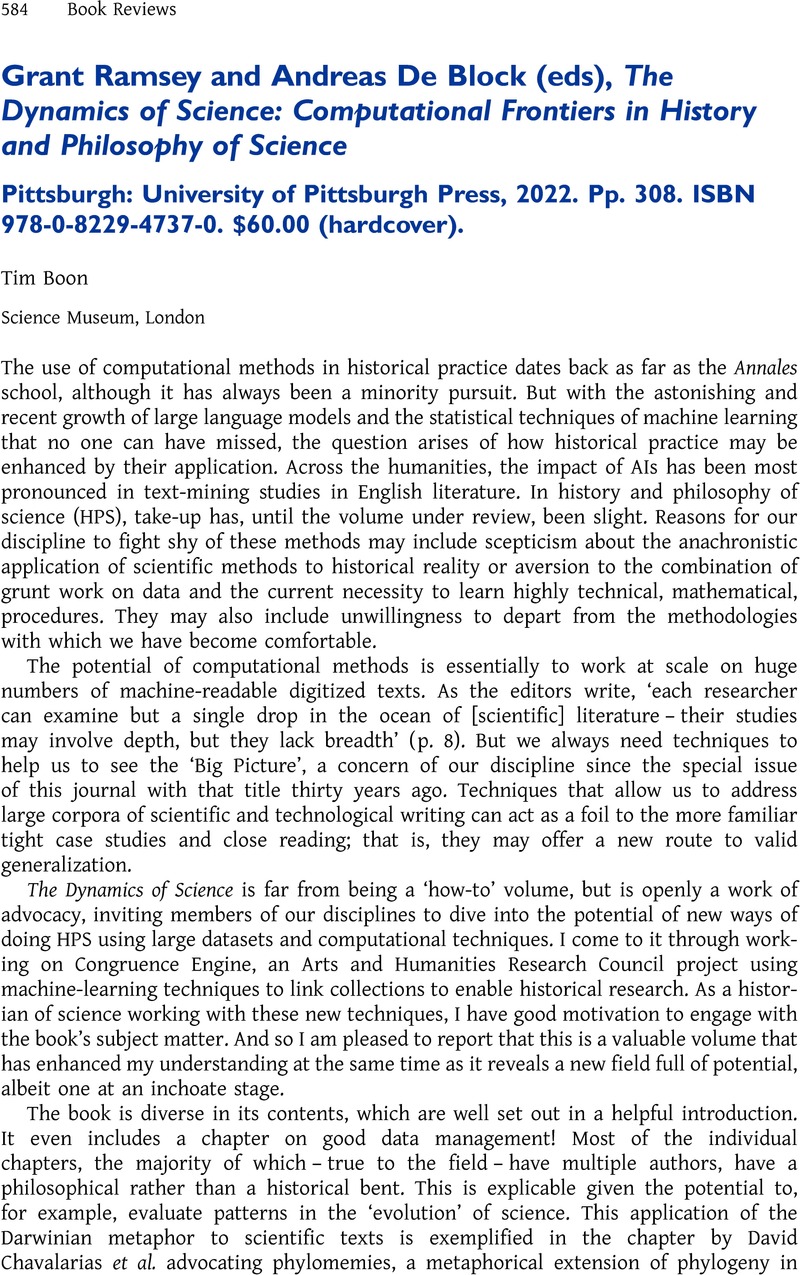No CrossRef data available.
Article contents
Grant Ramsey and Andreas De Block (eds), The Dynamics of Science: Computational Frontiers in History and Philosophy of Science Pittsburgh: University of Pittsburgh Press, 2022. Pp. 308. ISBN 978-0-8229-4737-0. $60.00 (hardcover).
Review products
Grant Ramsey and Andreas De Block (eds), The Dynamics of Science: Computational Frontiers in History and Philosophy of Science Pittsburgh: University of Pittsburgh Press, 2022. Pp. 308. ISBN 978-0-8229-4737-0. $60.00 (hardcover).
Published online by Cambridge University Press: 31 October 2023
Abstract
An abstract is not available for this content so a preview has been provided. Please use the Get access link above for information on how to access this content.

- Type
- Book Review
- Information
- The British Journal for the History of Science , Volume 56 , Special Issue 4: The Art of Gathering: Histories of International Scientific Conferences , December 2023 , pp. 584 - 585
- Copyright
- Copyright © The Author(s), 2023. Published by Cambridge University Press on behalf of British Society for the History of Science



